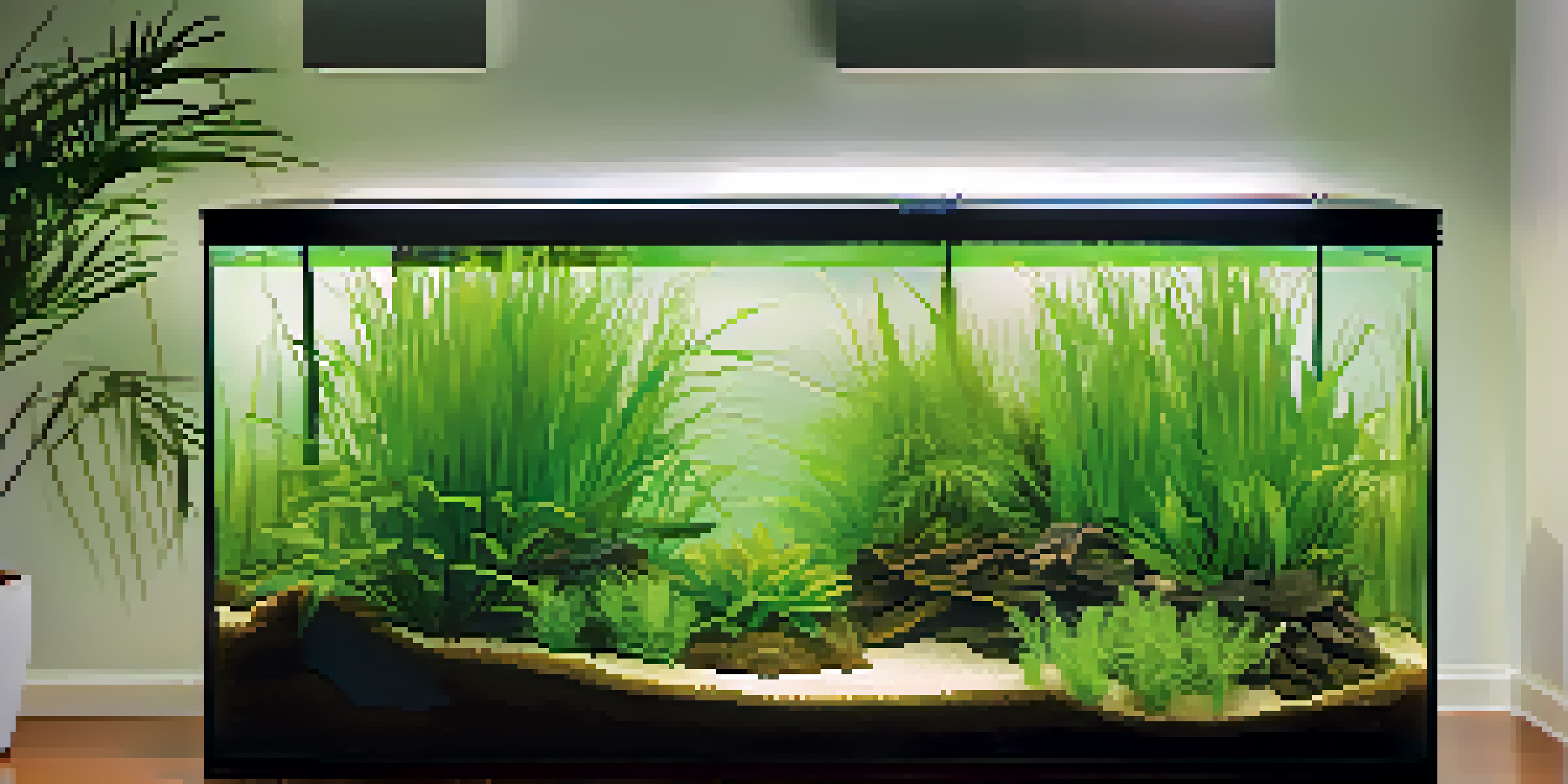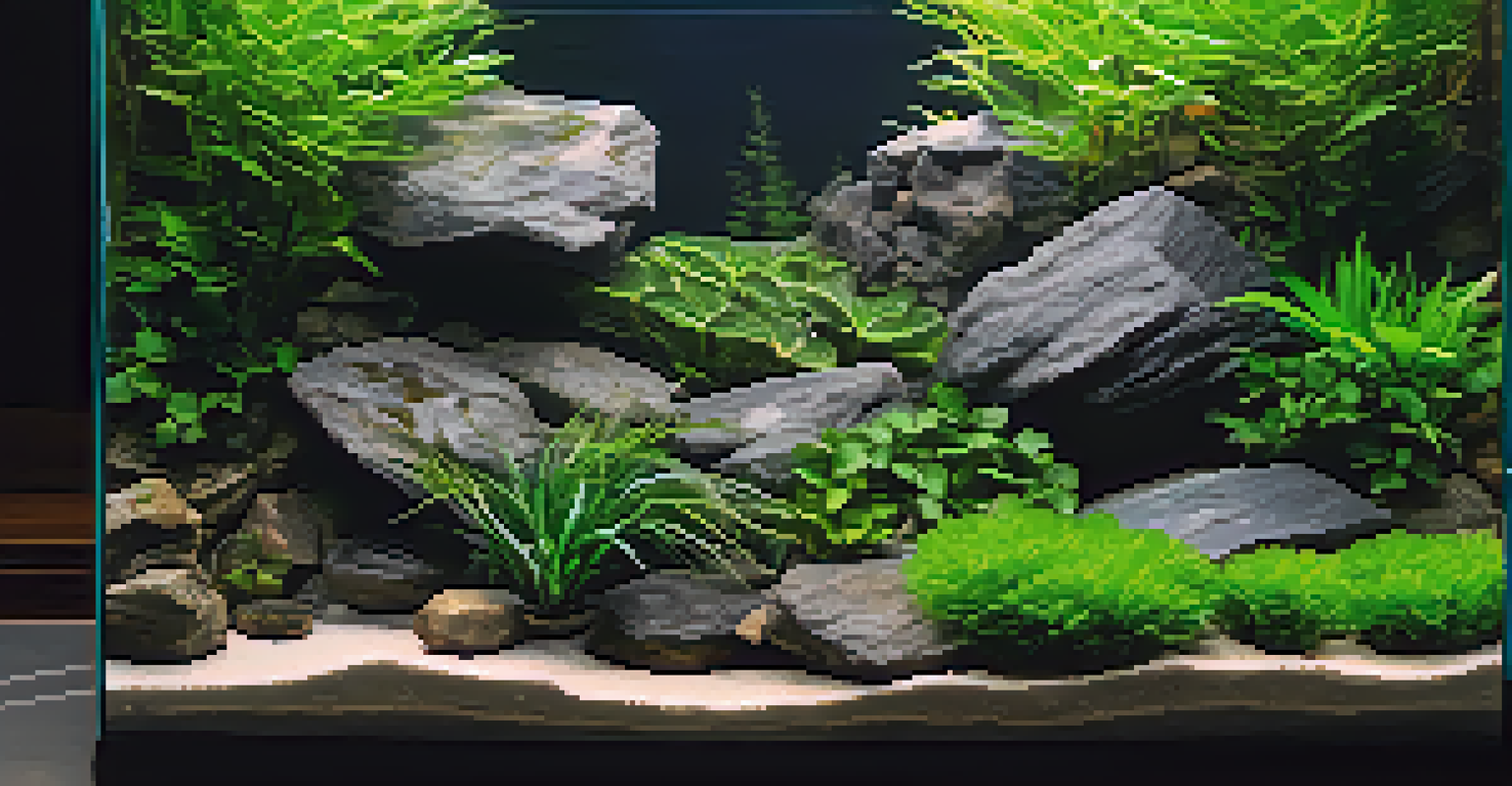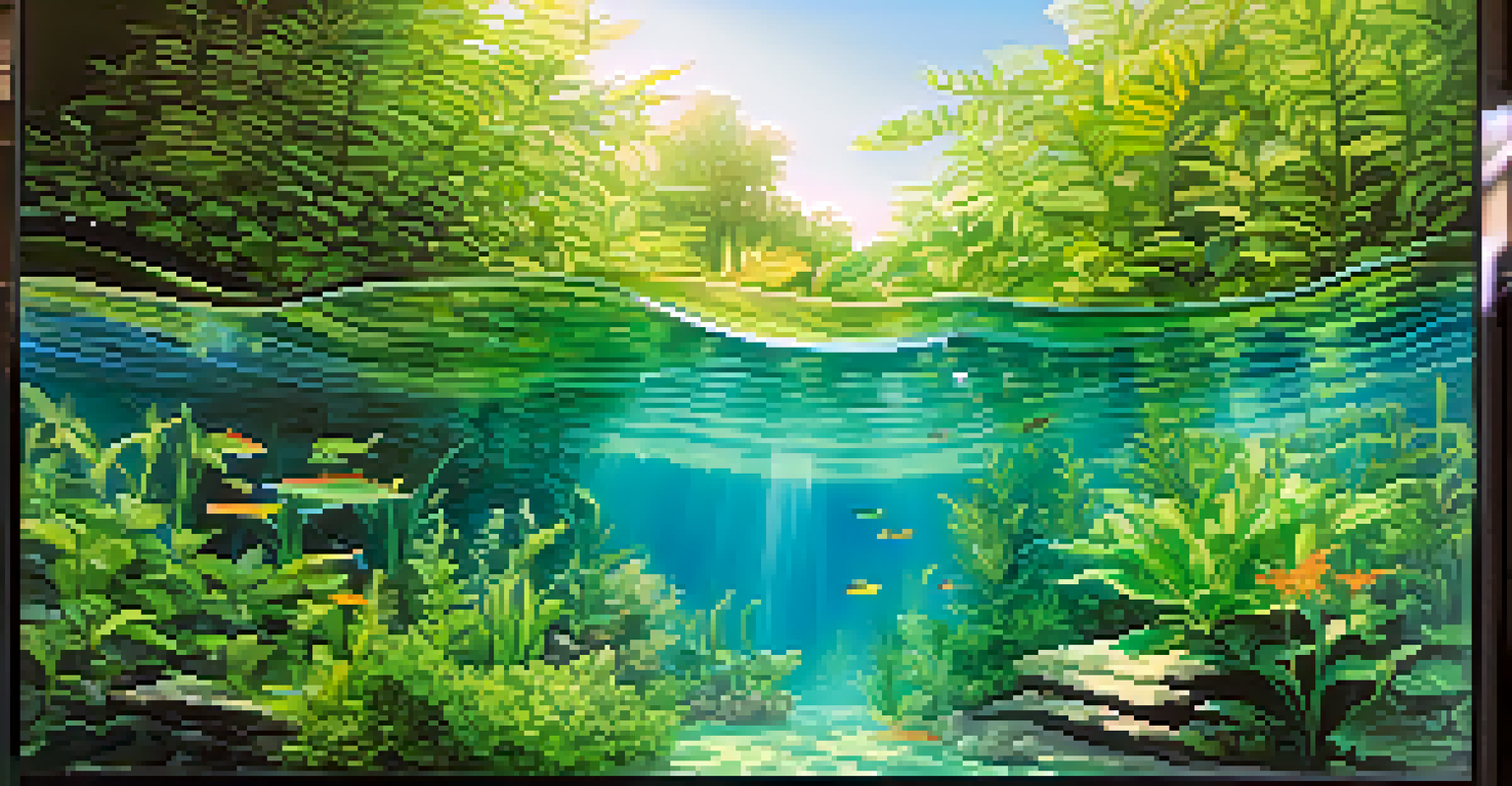Aquascaping Techniques: Layering for Visual Interest

Understanding the Basics of Aquascaping Layering
Aquascaping is all about creating beautiful underwater landscapes, and layering is a key technique to achieve depth and interest. Think of your aquarium as a three-dimensional canvas where you can play with different heights, textures, and colors. By layering various elements, such as rocks, plants, and substrates, you can draw the eye and create a more dynamic environment for both you and your aquatic life.
Nature is the ultimate inspiration for any aquascaper. The way plants and landscapes interact in the wild can teach us a lot about balance and layering in our designs.
One of the foundational principles in aquascaping is the rule of thirds. This rule suggests dividing your layout into three equal sections, both vertically and horizontally, to guide the placement of your elements. This simple technique can help you create balance and harmony in your design, making it visually appealing.
Remember that layering isn't just about stacking; it's about creating a sense of perspective. By placing taller plants or structures in the back and shorter ones in the front, you encourage viewers to look deeper into the aquascape, enhancing the overall experience.
Choosing the Right Plants for Layering
Selecting the right plants is crucial for successful layering in your aquascape. Tall plants, like Vallisneria or Hygrophila, work best at the back, while mid-height varieties, such as Cryptocoryne, can occupy the middle ground. For the foreground, consider shorter plants like dwarf hairgrass or mosses that can create a lush carpet effect, drawing the viewer's eye.

Each plant species has its own growth habits and light requirements, so make sure to choose plants that complement each other in both appearance and maintenance needs. This way, you can create a layered effect without overwhelming yourself with care. Mixing textures, such as broad-leafed plants with fine-leaved ones, can enhance the visual interest.
Mastering Layering Techniques
Layering in aquascaping creates depth and visual interest by arranging plants and hardscape elements at varying heights.
Additionally, think about color when selecting plants. A variety of green hues can create depth, but adding plants with red or purple foliage can provide striking contrast, making your aquascape pop even more. Layering colors as well as heights can transform your aquarium into a vibrant masterpiece.
Incorporating Rocks and Hardscape Elements
Hardscape elements, like rocks and driftwood, play a vital role in layering as they add structure and depth to your aquascape. Using larger rocks in the back creates a sense of stability, while smaller stones can be used in the foreground to create a natural transition. This approach mimics nature, where larger elements are found in the background and smaller ones near the front.
An aquarium is a world of its own, a canvas for our creativity, where we can layer life and art in a harmonious blend.
When placing hardscape materials, consider the visual weight and alignment. A balanced arrangement can guide the viewer's eye throughout the aquarium. For example, cluster rocks in groups of three or five to create a more organic look, steering clear of symmetry that feels too rigid.
Don’t forget to leave open spaces among your rocks to allow plants to grow and fill in the gaps over time. This not only enhances the layered effect but also encourages aquatic life to explore these areas, creating a more vibrant ecosystem.
Creating Depth with Substrate Layers
Substrate plays a crucial role in aquascaping, not just as a base for plants, but also in creating layers that enhance depth. Start with a nutrient-rich base layer to support root growth, then add a layer of lighter substrate on top, which can help with drainage and aesthetics. This technique mimics natural environments where soil varies in depth and composition.
Consider using different colored substrates to create a layered effect visually. Dark substrates can make lighter plants stand out, while lighter substrates give a clean, modern look. Experimenting with gradients can also add a unique twist, drawing the eye in different directions.
Choosing Complementary Plants
Selecting plants based on their height, texture, and color enhances the layered effect and overall aesthetic of your aquascape.
Moreover, layering your substrate can help with plant growth and overall tank health. By creating a sloped substrate that is deeper at the back and shallower at the front, you encourage plants to grow taller, enhancing that all-important sense of depth.
Utilizing Water Levels for Layering
While we often think of layering in terms of physical elements, the water level itself can also contribute to your aquascape's depth. By adjusting the water level, you can create different layers that highlight specific plants or hardscape features. For instance, a lower water level can emphasize foreground plants, while a fuller tank showcases taller plants in the background.
This technique is particularly effective in paludariums or aquariums with emersed sections, where some plants grow above the water line. Incorporating this kind of layering not only adds visual interest but also creates a unique environment for both aquatic and terrestrial life.
Additionally, consider how surface movement and light penetration change with varying water levels. Adjusting these elements can enhance the overall look and feel of your aquascape, making it more dynamic and engaging for viewers.
The Role of Lighting in Layered Aquascapes
Lighting is an often-overlooked component of aquascaping that can dramatically impact how layers are perceived. The right lighting can highlight the textures of your plants and hardscape, adding depth and dimension to your design. Experimenting with different light angles and intensities can help you find the perfect setup for your aquarium.
Consider using spotlights or adjustable LED fixtures that allow you to focus light on specific areas, enhancing the visual interest of your layered design. By directing light to the back or to specific plants, you can create shadows and highlights that bring your aquascape to life.
Importance of Lighting
Proper lighting can dramatically elevate the perception of layers in your aquascape, highlighting textures and creating dynamic shadows.
Also, be mindful of color temperature; warmer lights can create a cozy atmosphere, while cooler lights can make colors pop. Understanding how lighting interacts with your layered elements can elevate your aquascape from simple to stunning.
Maintaining Your Layered Aquascape for Longevity
Once you've created your stunning layered aquascape, maintaining it is essential to preserving its beauty. Regular trimming of plants will help keep the layers defined and prevent overcrowding, ensuring that each element can shine. Additionally, routine water changes and substrate management will keep the tank healthy and the layers looking fresh.
Monitor the growth of your plants and the health of your fish, as both can impact the visual layering of your setup. If you notice certain areas becoming too dense, take action by repositioning plants or adjusting lighting to prevent overshadowing.

Lastly, don’t be afraid to make changes over time. Aquascaping is an art form, and as your plants grow and evolve, so should your design. Embrace the journey of maintaining and enhancing your aquascape, and enjoy the ever-changing beauty of your underwater landscape.